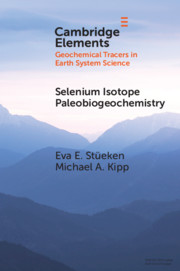Refine search
Actions for selected content:
1 results

Selenium Isotope Paleobiogeochemistry
-
- Published online:
- 18 September 2020
- Print publication:
- 08 October 2020
-
- Element
- Export citation
